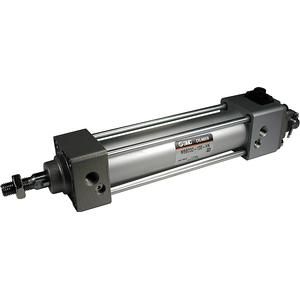Pneumatic Equipment: Understanding the Differences Between Cylinder and Piston-Type Actuators
2024-01-27
In the realm of pneumatic equipment, two common types of actuators are the cylinder and piston-type actuators. Despite sharing some similarities in appearance and operational principles, these two exhibit key distinctions. Let’s delve into the nuances that set cylinder actuators apart from piston-type actuators.
Visual Distinctions:
At first glance, cylinder actuators present cylindrical-shaped barrels, while piston-type actuators feature standard cylindrical barrels. The piston in a cylinder actuator typically takes on a disc-like shape, closely fitting the inner walls of the barrel. In contrast, the piston in a piston-type actuator adopts a conventional cylindrical form.
Operational Principles:
The operational principles of cylinder actuators are somewhat unique. When gas enters the cylinder actuator, the pressure acts on the piston, propelling it to slide along the inner walls of the barrel. This sliding motion induces a rotational movement in the piston, subsequently driving the output shaft of the cylinder actuator to rotate. Therefore, cylinder actuators are primarily utilized for applications requiring rotational motion.
On the other hand, the operational principles of piston-type actuators are more conventional. When gas pressure acts on the piston in a piston-type actuator, the piston moves linearly within the barrel, either through a connecting rod or directly driving the output shaft for linear motion. Piston-type actuators are widely employed in applications necessitating linear motion, such as pushing, pulling, or compressing.
Application Variances:
Furthermore, cylinder actuators and piston-type actuators find diverse applications. Due to their capability to generate rotational motion, cylinder actuators are commonly used to drive rotating components like worktables or valves. Piston-type actuators, with their ability to produce linear motion, are extensively applied in various automation devices and production lines, including assembly lines and material handling machinery.
Understanding these distinctions in appearance, operational principles, and applications allows users to make informed decisions when selecting the most suitable actuator type for their specific application requirements.